Photograph of Charles Mamou, courtesy of ©manfredbaumann.com
A fax cover sheet addressed to Assistant District Attorney Lyn McClellan and dated September 24, 1999, along with an HPD officer’s handwritten caller ID records were seen for the first time by Charles Mamou in 2020, over twenty years after the Houston Police Department and District Attorney’s office had access to them. The cover sheet and phone records were not shared with Mamou at trial, and could have assisted in the investigation as well as discredited the testimony of two of the prosecution’s key witnesses. In a case without physical evidence, those witnesses were critical. The jury that found Charles Mamou guilty and sentenced him to death never saw the documents, and they were only recently obtained by Mamou’s advocates.
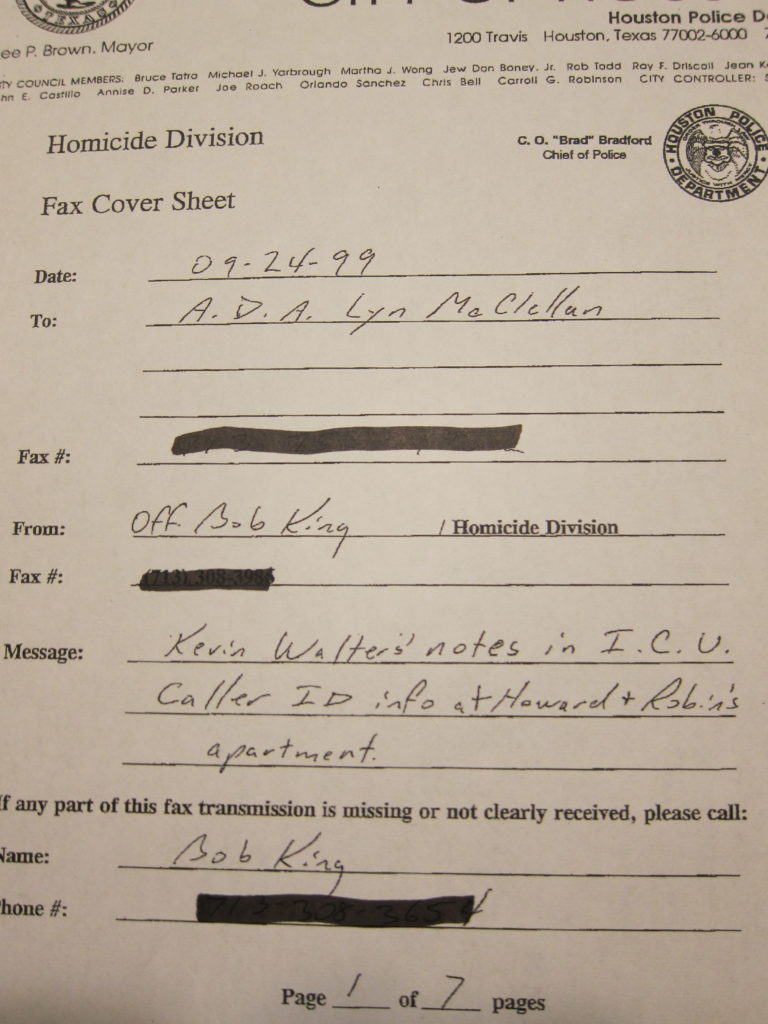
Charles Mamou was sentenced to die in 1999, not long after this fax is dated, for the kidnapping and murder of Mary Carmouche. Mamou has always maintained his innocence and describes fleeing a drug deal gone wrong in a car that didn’t belong to him – Carmouche was in the backseat – and returning to an apartment complex in Houston, Texas, where he was staying. Mamou lived in Louisiana and was in Texas, in most part, for a drug deal. According to Mamou, he last saw Carmouche alive and in the parking lot of the apartment complex, along with several other individuals, two of whom would end up being key witnesses for the prosecution, claiming they were at home in bed, and never saw Mamou after the drug deal – also claiming they did not make or receive phone calls that night.
The phone records – one of two pieces of actual evidence in the case – were never shared with Mamou or the jury. The other piece of evidence that Mamou and the jury never heard about was a rape kit that was collected, which included the collection of ‘trace evidence’ and ‘hairs’. In a case with no fingerprints at the scene of the body, no footprints, no witnesses, no weapon – a rape kit and phone records are the next best thing. The prosecution knew about both. The jury and Mamou knew about neither. Not only did the prosecution know about the rape kit – they also told the jury Mamou sexually assaulted the victim.
The HPD investigator’s notes include identifying notations next to the phone numbers. The victim was last seen alive on the evening of December 6, 1998, early morning of December 7, 1998. The key witness, Howard Scott, lived at the apartment complex Mamou said he drove the car to. These are Scott’s caller ID records from that night, as written by an HPD investigator that went to Scott’s apartment on December 8, 1998.
11:19 p.m., Oretha Gray;
11:25 p.m., Sun Suites;
11:46 p.m., Emily Griggs;
11:48 p.m., Meri Eubanks;
12:14 a.m., payphone;
12:19 a.m., M.E. Brinson – Shawn’s mother;
1:54 a.m., Meri Eubanks;
2:37 a.m., wireless [WRITER’S NOTE: the phone number listed at 2:37 is identified in HPD’s file as belonging to another key witness, Samuel Johnson];
3:12 a.m., M.E. Brinson – Shawn calls for Howard;
3:43 a.m., call notes.
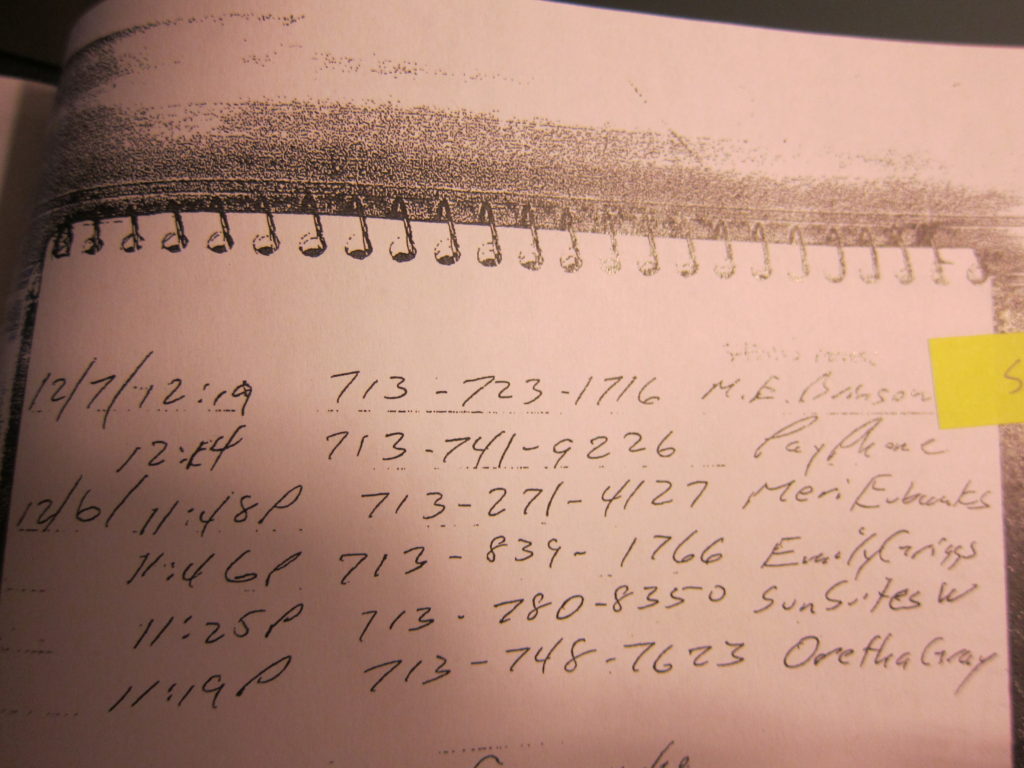
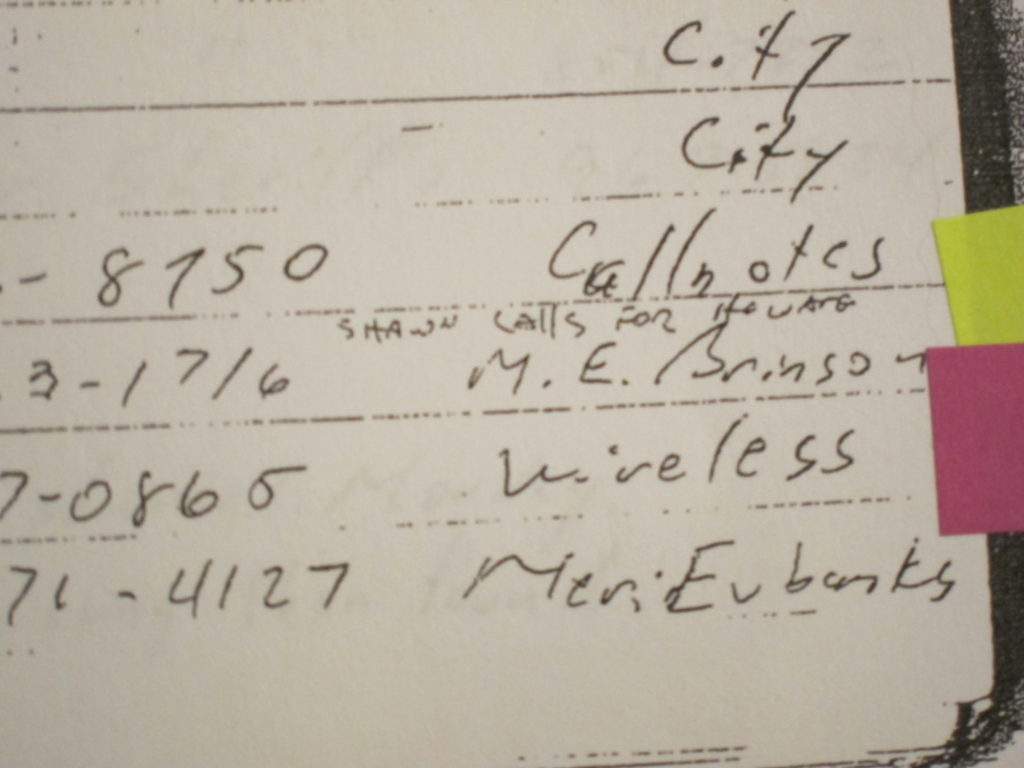
Mamou could have used this information in his defense, and investigators may have had an opportunity to pursue the location of the wireless phone call made at 2:37 a.m. from a cell phone used by Samuel Johnson, a witness who testified he was home in bed and didn’t talk to anyone that night. Johnson’s contradicting statement and testimony are sufficient reason to pursue the origin and purpose of the 2:37 a.m. phone call for anyone trying to find answers in a murder investigation.
Charles Mamou did not live in Houston. All of the key witnesses did, and Samuel Johnson also worked for Orkin at the time, testifying that his area was in the southwest area of Houston. Although it was often reported that the victim was found near some abandoned houses, she was actually found in what detectives described as a hard to find location in a suburban neighborhood in the southwest area of Houston in the backyard of a house that was for sale – not some abandoned houses.
When the HPD investigator went to Howard Scott’s apartment on Tuesday, December 8, 1998, the investigator was actually hoping to arrest Mamou. They knew he was there that morning from Howard Scott’s wife, and they knew Mamou had been involved in the drug deal that Mary Carmouche had last been seen at. Investigators didn’t find Mamou, but they wrote down Scott’s caller ID records and transported Scott to HPD that day to make a written statement. Not only is that documented in HPD’s case file, Detective Novak also testified regarding Howard Scott’s written statement that day.
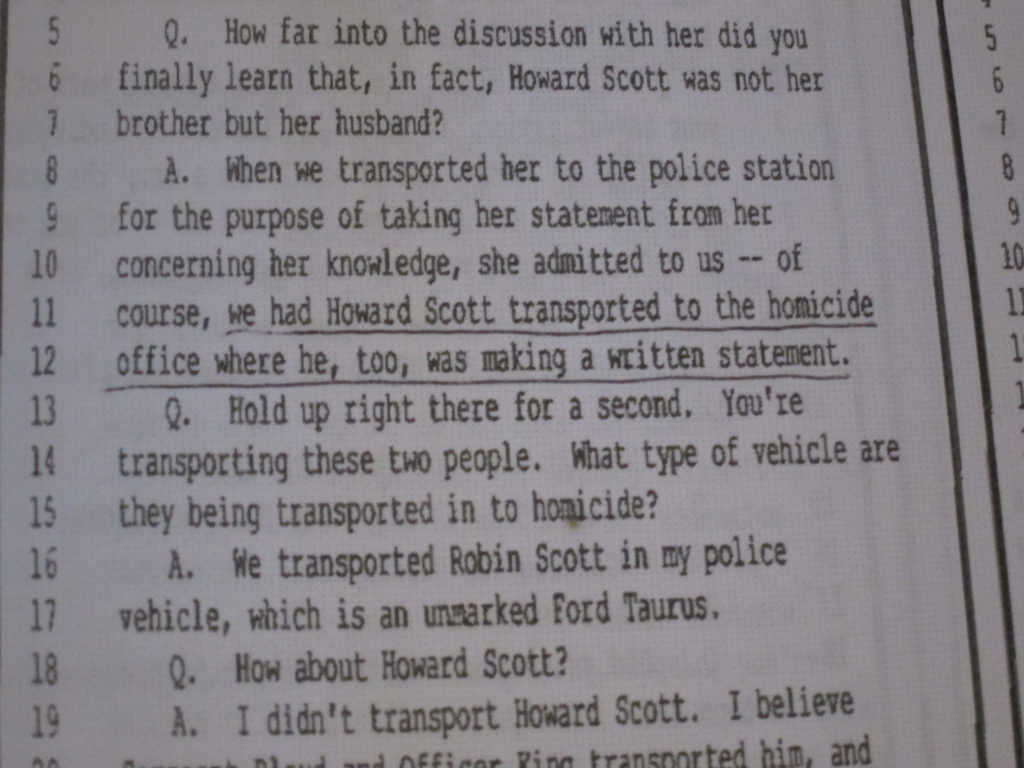
That original statement from Howard Scott is nowhere to be found. It is not in the HPD case file, and according to the District Attorney’s office, they don’t have it either. I was told by HPD, that ‘everything doesn’t always makes it into the file’. The following day, police brought Scott and his wife back to HPD and took written statements again on Wednesday, December 9, 1998. Both of Robin Scott’s statements are available, but Howard Scott’s original statement is missing.
I tried to speak to Scott in 2019, but he refused to talk to me. He has spoken to other people over the years, and his statements are inconsistent throughout. The most recent of which, in 2019, includes a physical description of Carmouche from that night, and seeing Samuel Johnson, Charles Mamou and Mary Carmouche all at the apartment complex at the same time – a complete reversal from his testimony, in which he claimed he was home in bed and did not see Samuel Johnson or Charles Mamou after the drug deal, and his phone did not ring. Howard Scott described seeing Samuel Johnson, Charles Mamou, Mary Carmouche, and Kenneth Duplechan all alive and at the apartment complex parking lot after the drug deal.
The jury never heard that. The prosecutor who, according to the the fax cover sheet, was sent Scott’s caller ID records on September 24, 1999, listened to his witness testify two weeks later on October 7, 1999, about going to bed between 11 and midnight, and about how the phone was ringing prior to that, as he sat with ‘Shawn’ and Ken. Scott told the jury there were ‘no more phone calls’ after he went to bed. Neither the jury nor Mamou are ever told ‘Shawn’, the man Scott said he was talking to in his apartment before he went to bed between 11 and 12, called Scott’s apartment at 12:19 a.m., and again at 3:12 a.m., and that Scott’s phone didn’t stop ringing until 3:43 a.m. Although Howard Scott has consistantly contradicted himself for twenty years, and his first statement is missing, he was a key witness in the case against Mamou.
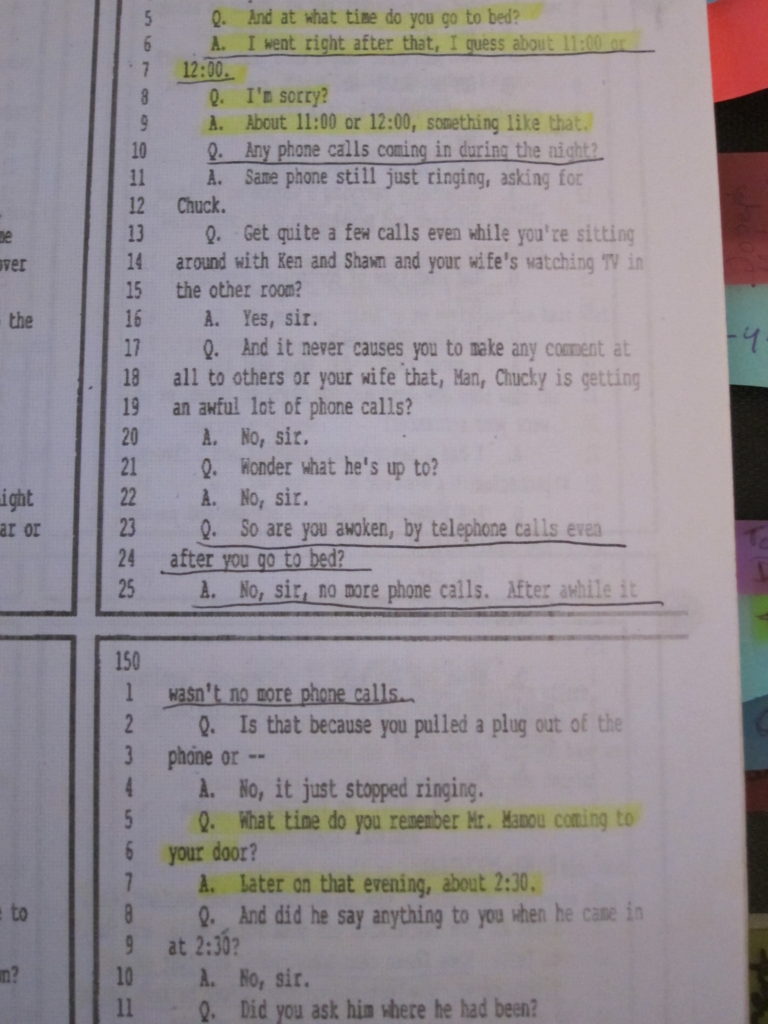
Samuel Johnson, the driver in the drug deal gone wrong, who fled the alley without Mamou, testified he went straight home to bed and spoke to no one, never seeing Mamou or Carmouche again, not seeing or speaking to anyone that night. According to the HPD investigator’s notes, Samuel Johnson called Howard Scott’s apartment at 2:37 a.m., from a wireless phone. At that time in history, landlines were frequently used for phone calls made from a person’s residence, and wireless calls were more likely to be made when away from home. Mamou never had an opportunity to point out to the jury that Johnson’s phone made a call to Howard Scott’s apartment nor was he able to investigate the location of the call’s origin. The prosecution did not share the available information with the jury.
‘Ken’ who Howard Scott mentioned was sitting in his living room in his testimony, has since been interviewed, although there is nothing in HPD’s file to indicate that anyone involved in trying to find Carmouche’s killer ever interviewed him during HPD’s ‘investigation’. In 2019 Kenneth Duplechan told an investigator he saw Charles Mamou, Howard Scott, Samuel Johnson and Shawn Eaglin in the apartment complex parking lot that night – along with the blue Lexus Mamou fled the drug deal in. That statement contradicts everything the jury was told. Kenneth Duplechan also stated he stayed in the parking lot talking to Howard Scott and Charles Mamou after Samuel Johnson drove away. The jury never heard any of that, but the phone records reveal one name coming up twice on Scott’s phone that night – Meri Eubanks. Meri Eubanks does appear to know Kenneth Duplechan, but Eubanks and Duplechan will not respond to inquiries from me. Although the HPD investigator is the individual who wrote down the name Meri Eubanks in his notes as a caller to Scott’s apartment, there are no records of anyone at HPD interviewing Eubanks in their efforts to locate Carmouche’s killer.
There were other phone calls made to the apartment that night that could have been investigated, but according to police files were not, and Mamou was not aware of them at the time, so he was unable to pursue them himself.
The prosecution also knew about actual physical evidence that was collected as part of a rape kit. They did not share what they learned with the jury or Mamou. That information has been kept from Mamou for over twenty years.
On July 8, 1999, two months before Mamou’s trial, an investigator for the District Attorney, Al Rodriguez, contacted HPD and asked them to process a rape kit.
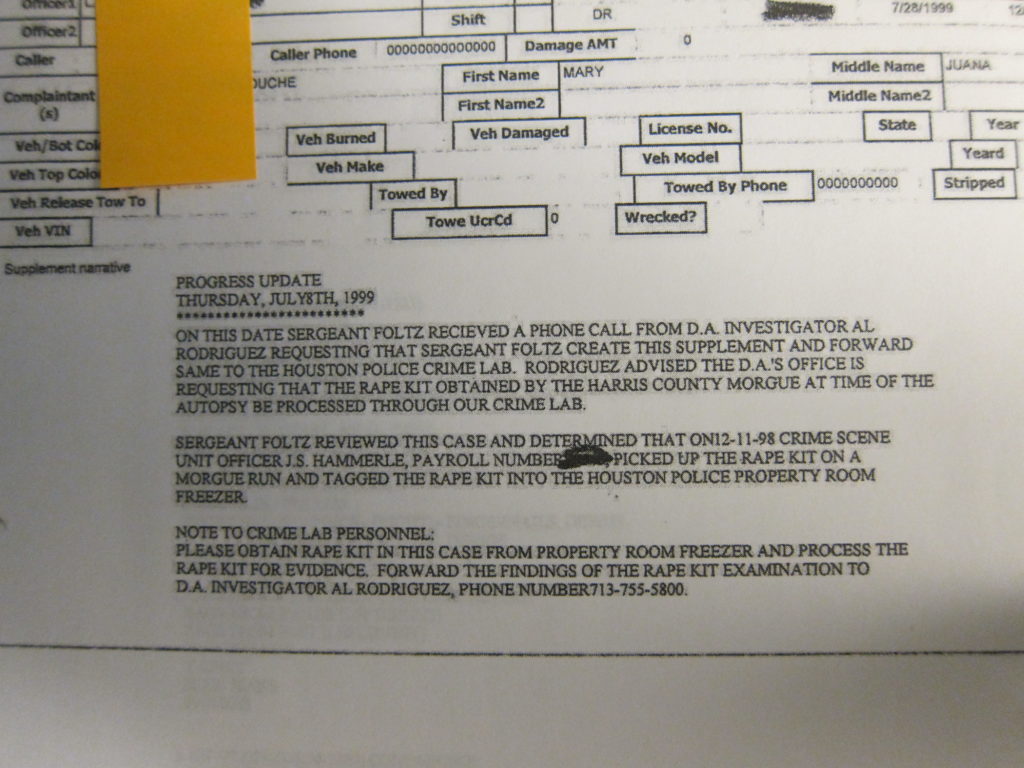
On July 12, 1999, the results were back, indicating that no semen was detected, trace evidence and hairs existed and had been collected.
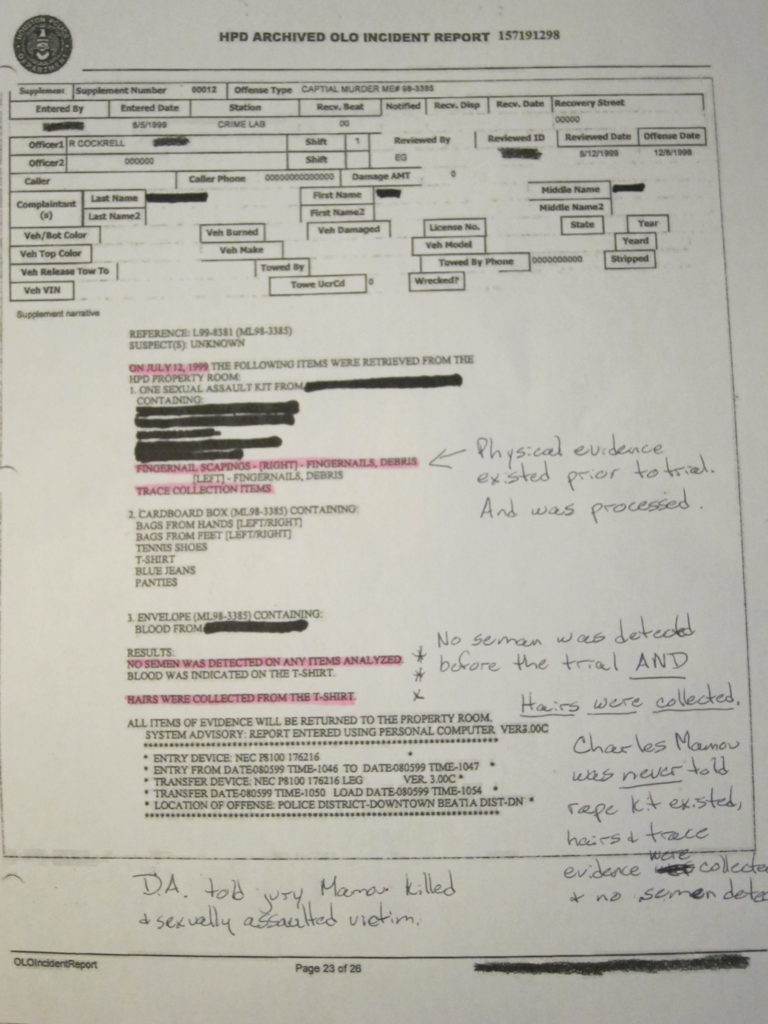
During the trial, the medical examiner testified at length about the procedures during an autopsy as well as reviewing the autopsy report itself. At no point throughout the entire trial, or in the twenty years since, was Charles Mamou or the jury told a rape kit existed. Quite the opposite. The rape kis was so well not documented, that in 2007 a private investigator looking for more evidence had to report back to Mamou that he could not find more evidence obtained by the medical examiner.
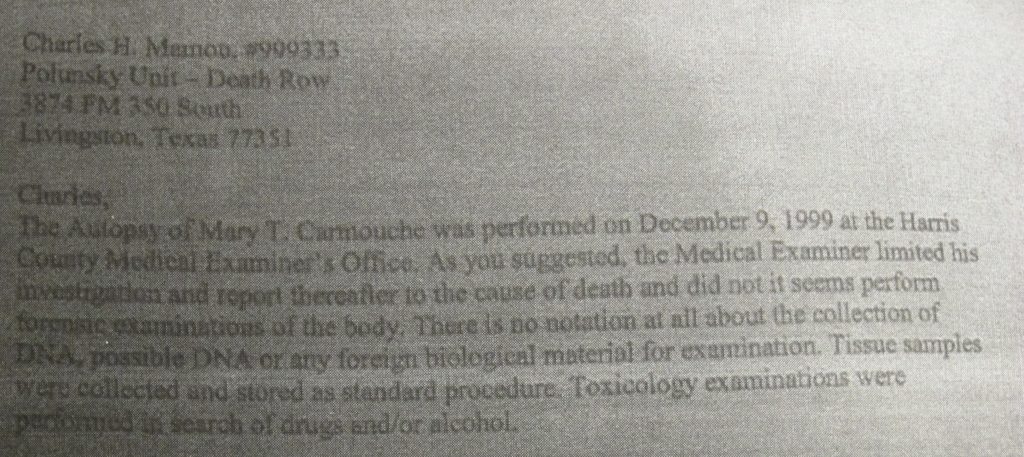
Last year, on October 30, 2019, after I had gone to HPD and the District Attorney’s office requesting the results of the rape kit and being told they don’t keep that kind of information, I contacted the Harris County Medical examiner looking for the information. It was confirmed for me at that time that the rape kit had been collected at the time of the autopsy in spite of the medical examiner neglecting to include that information in his autopsy report and testimony.
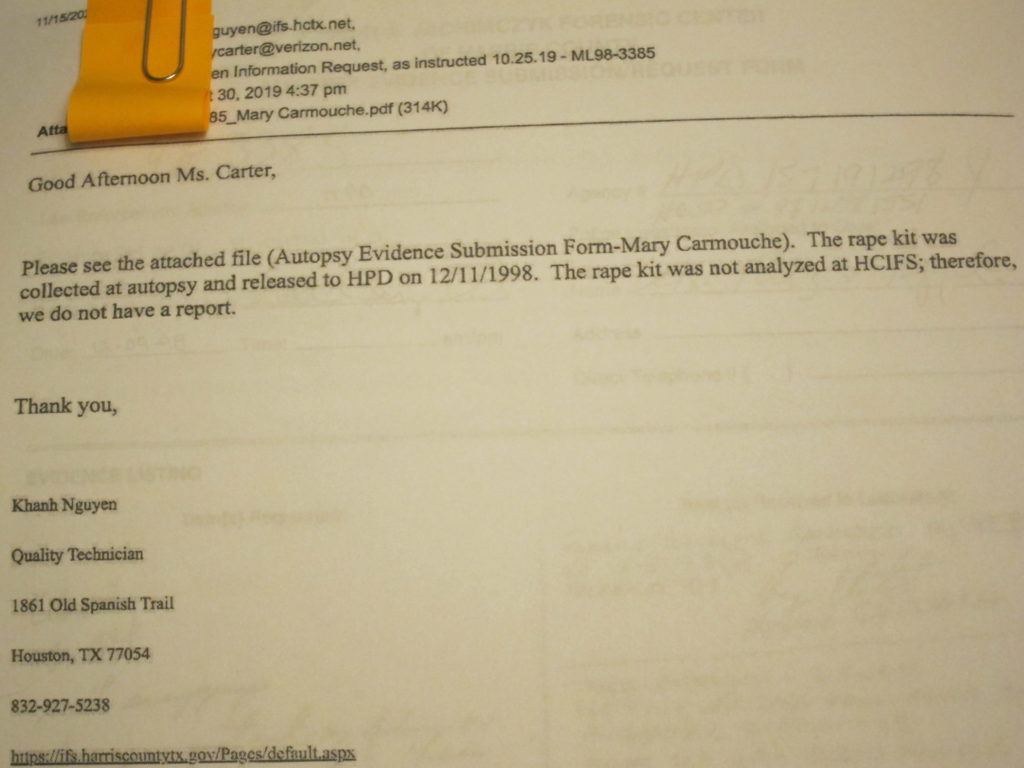
On November 19, 2019, I was able to obtain the results to the actual rape kit, noting no semen found and trace evidence collected.
The information wasn’t just kept from Mamou and the jury, the prosecutor also told the jury that a sexual assault took place, but failed to share with the jury or the defense that no semen was found .
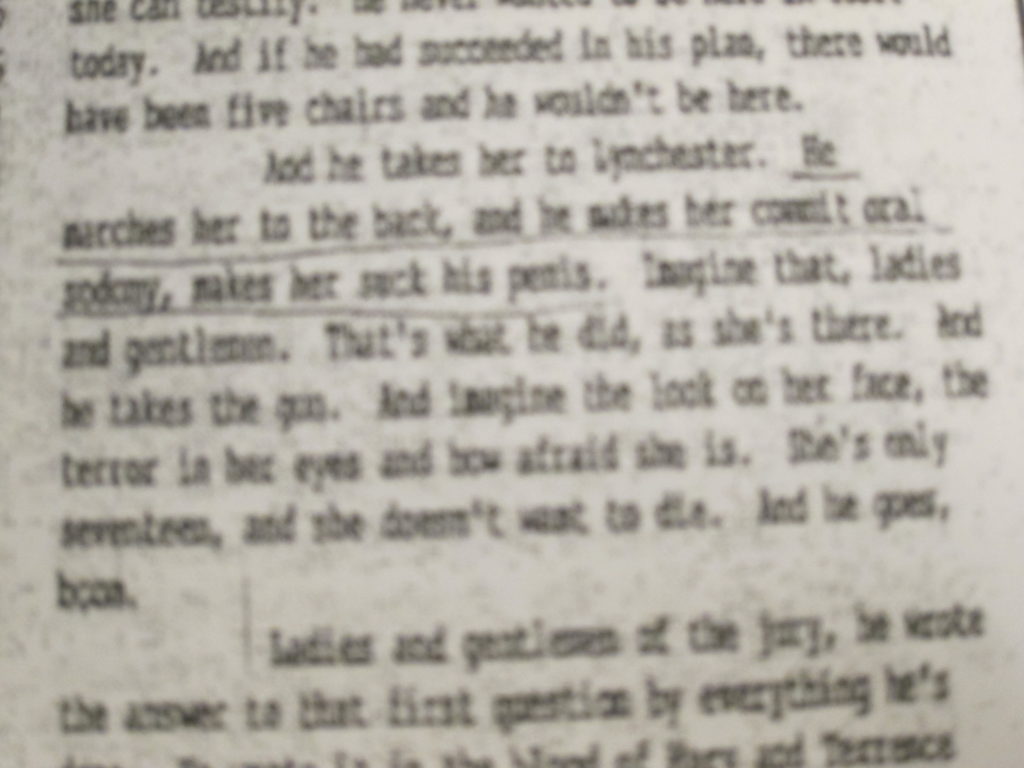
A lot of things were told to the jury to steer them in the direction of a guilty verdict. The day after Carmouche went missing, Mamou was with his cousin when he picked up some sunglasses that he had dropped during his stay in Houston. Without surrounding information, the sunglasses became tied to the victim in the courtroom and later in news reports. It was never pointed out for the jury that the glasses were found approximately five miles from the body.
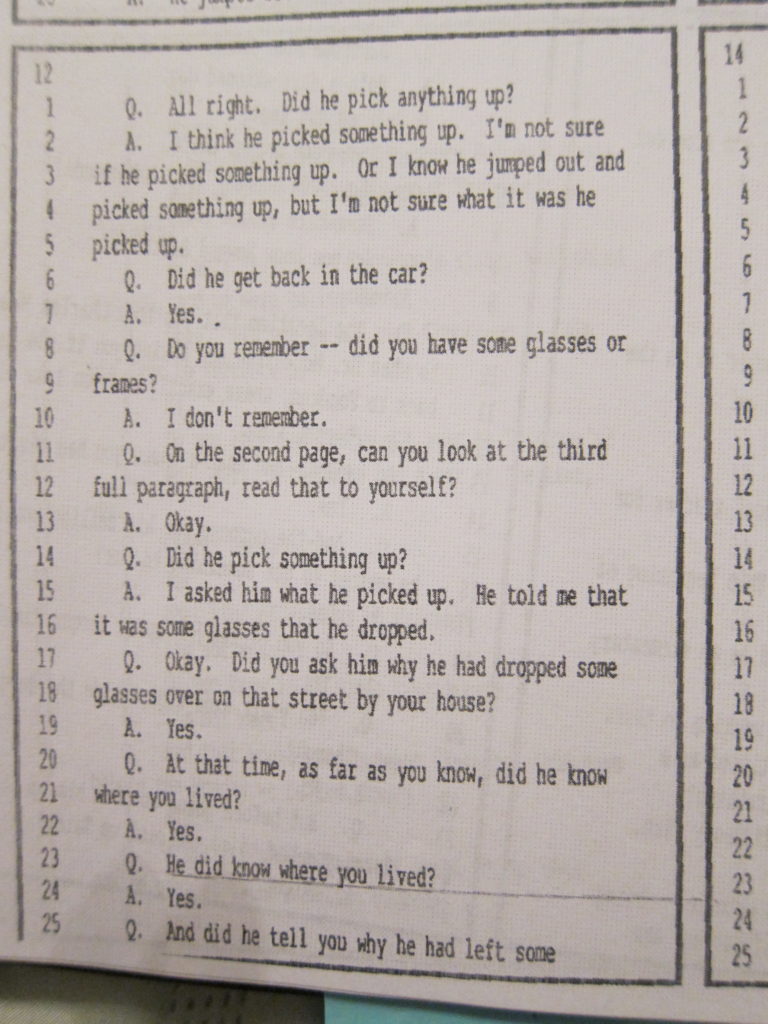
There were a lot of things not pointed out for the jury. Mamou never saw the original video statement of his cousin, Terrence Dodson, who told jurors that Mamou confessed to him. In 2019, I sent Mamou a transcript of the original statement. Although Dodson testified Mamou confessed to him over days, partially in person and partially over the phone, HPD investigators had recorded Dodson originally telling them Mamou called him from Louisiana ‘before day’ on Tuesday, December 8, 1998, and told him everything. Investigators knew, while they were listening to Dodson’s statement, Mamou had not left Houston until Tuesday at 1:30 p.m. on a bus. The interview took place on Wednesday, December 9, 1998.
Dodson’s testimony not only differed from his statement, but Mamou never saw Dodson again after the morning of Monday, December 7, 1998. He could not have confessed to him in person as he testified, nor could he have confessed in one phone call from Louisiana before day on December 8, 1998, as he said in his original statement because Mamou did not leave Houston on a bus headed to Louisiana until Tuesday afternoon at 1:30.
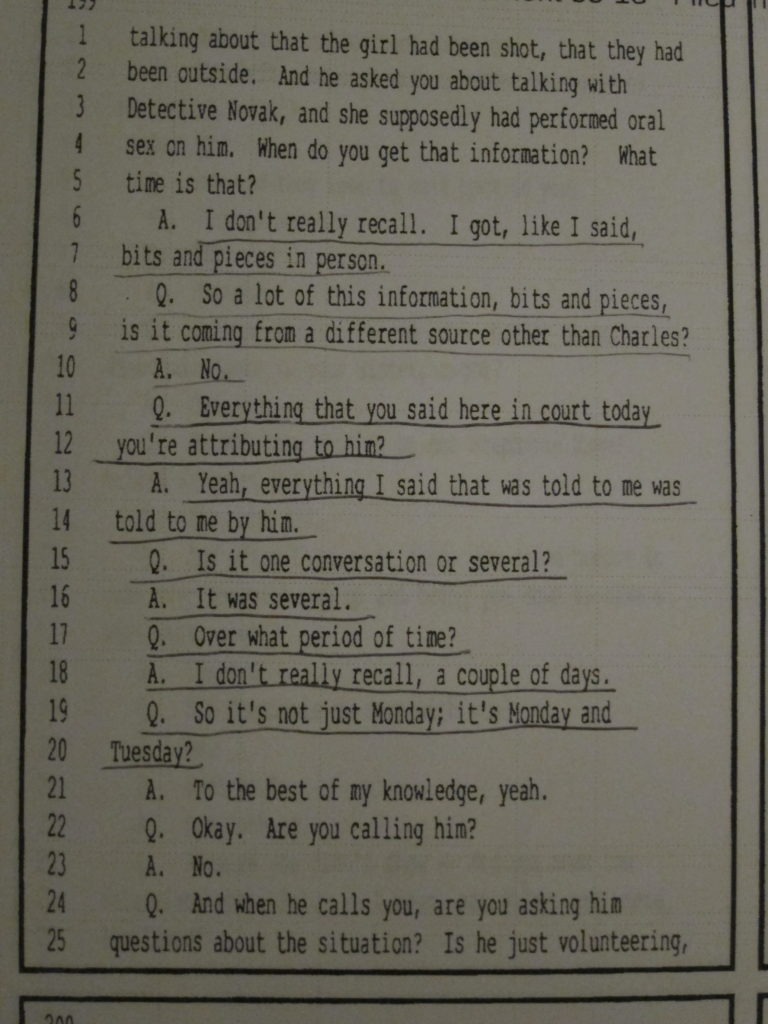
The jury also never saw a letter Terrence Dodson wrote to Mamou a month after Carmouche was murdered, stating he was glad Mamou didn’t tell him anything.
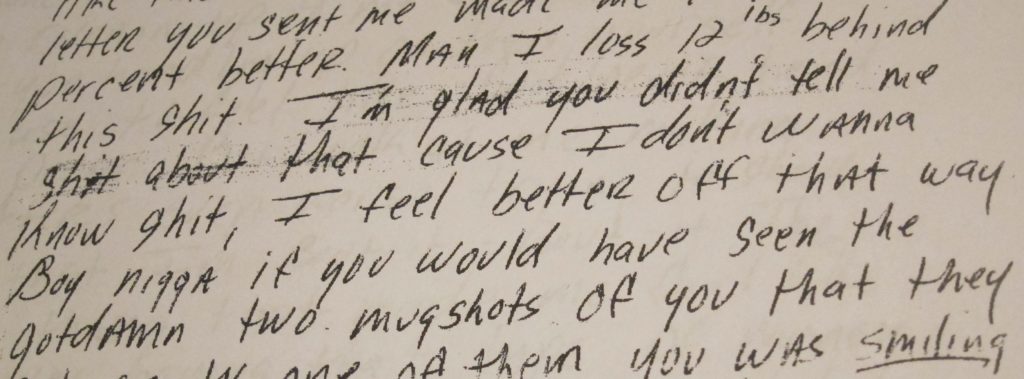
In 2019 it was noted in the HPD case files linked to Mamou’s case that biological evidence was signed out. I inquired at HPD, the Property Room, the Homicide Department, and the District Attorney’s office regarding why the evidence was signed out.
At the HPD Records Department, I was told they didn’t know the answer, and I should contact the Property Room, the District Attorney’s office, and the Medical Examiner.
At the District Attorney’s office, I was told the case was currently ‘closed’. There would be no current requests for evidence from them because no one was working it, and the files themselves were in storage – the case was inactive.
At the HPD Property Room, which was where the biological evidence was signed out from – I was told there is protocol in place, and in order to find out why the biological evidence was signed out, I would need to go to Homicide and speak with the investigator on the case.
At Homicide, I was told it was a ‘cold case’ and there was no active investigator on the case, I would need to talk to the person in charge of cold cases.
The cold case investigator wasn’t in and never returned my phone call.
I later received a phone call from D. Wilker in Homicide. I was told ‘only the Property Division could answer my questions’. Of note – the Property Division is where I had originally gone and was told that due to ‘protocol’, I would need to go to Homicide.
During that phone conversation, I was also told Ms. Wilker would reach out to the Property Division to see if she could get an answer for me, but she couldn’t make any promises. In addition, she informed me ‘we are mandated to test every piece of evidence’, suggesting that the evidence was taken out for testing. Ms. Wilker also suggested an investigator could have requested the material be checked out, but as I had already been told – there was no investigator on the case at that time. I was told she would get back in touch with me after she reached out to the Property Division.
After a couple weeks and no contact from Ms. Wilker – I called her. Ms. Wilker told me the rape kit results I was looking for at that time, which I later found without her assistance, were ‘irrelevant’. I was told the defense had every piece of evidence they needed to have. The ‘window of opportunity’ for finding out anything was closed. And, finally, yes, the evidence had been checked out in 2019 and had been in the possession of Mary K. Childs-Henry, but it was now back where it belonged. It had been checked out for ‘cataloging purposes’.
I then asked Ms. Wilker if she considered the matter closed, and she told me she did.
After that phone call I wrote a letter to Internal Affairs and the Chief of Police, as ‘cataloging’ two pieces of twenty year old biological evidence didn’t seem logical, and I had just been told the rape kit results that were never shared with Mamou were ‘irrelevant’, which also seemed illogical considering evidence was collected .
The Houston Police Department responded, telling me no one had done anything wrong. “In your letter, you inquired about procedures for removing evidence regarding Mr. Mamou’s case. The District Attorney is the only person that can authorize any type of evidence to be released for any reason. There are procedures in place for care, custody and control of evidence that is stored in the Property Room. You may reach the Harris County District Attorney’s Office at ….”
As of this date, it remains unclear why the biological evidence was signed out in 2019.
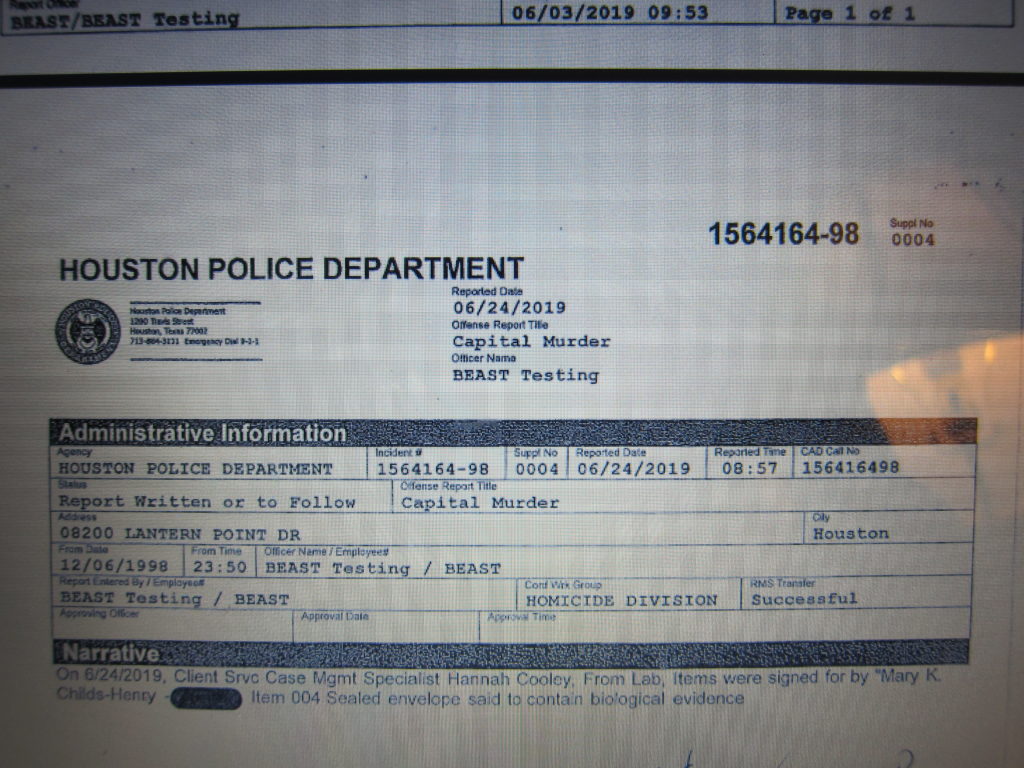
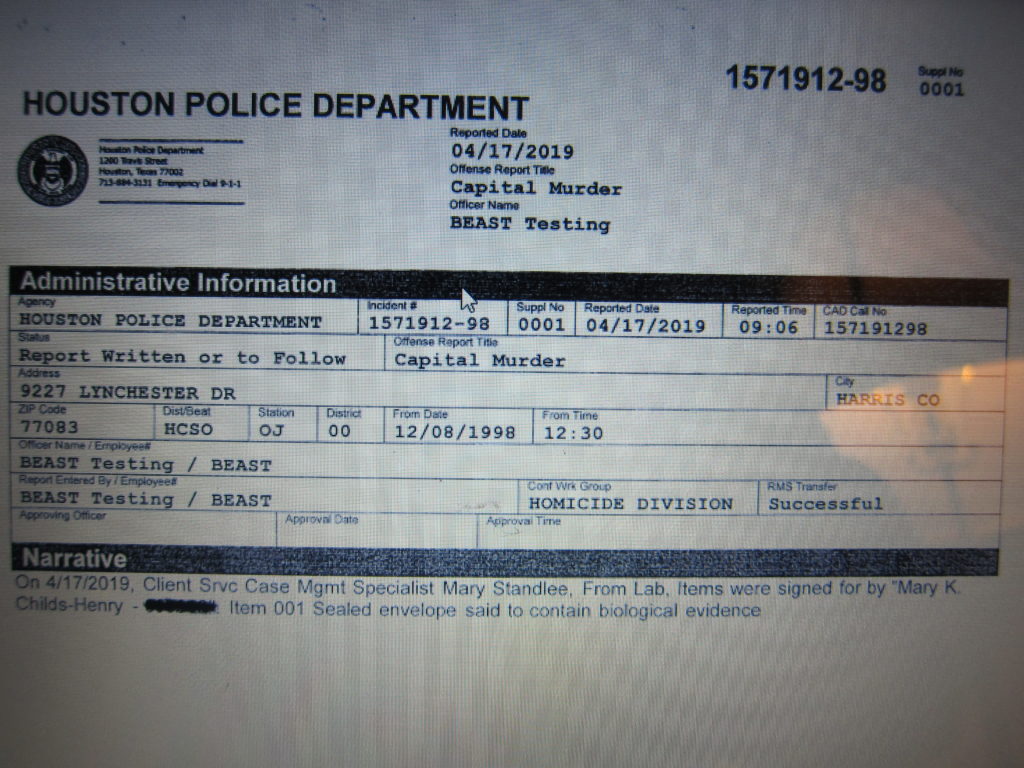
Charles Mamou has spent over two decades on death row and is awaiting an execution date. In a case without evidence shared with the jury, the prosecution painted a picture. In the painting, the jury was told Mamou sexually assaulted the victim and murdered individuals in previous unsolved murder cases. They were shown autopsy photos of another murder victim, from another crime, and heard the impact statements from the victim’s family in that crime.
One might argue with HPD that evidence is relevant. It’s relevant to victims and their families, and it is relevant to defendants. Charles Mamou’s little sister recently described the last Christmas Eve she shared with her brother over twenty years ago. She and her family spent the day at her Uncle White’s house in Lafayette. Their uncle had a house big enough for everybody, and his gumbo took all day and night to cook, but was worth the wait.
When the family got home that night, they could barely get through the living room because Mamou and his friends had been busy picking up gifts while everyone was gone. The kids weren’t allowed to open anything until morning, but their mom did allow them to set off the fireworks Mamou had brought home. There were so many, Mamou’s sister remembers the sky turning pink, and she remembers seeing two of Mamou’s children that night and the step kids he treated like his own.
Anyone with information regarding this case can contact me at kimberleycarter@verizon.net.
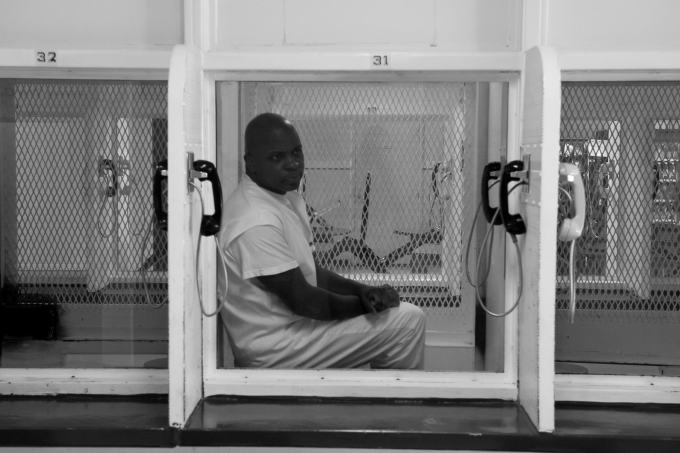
There is also a facebook page dedicated to Charles Mamou.
Photo, courtesy of ©manfredbaumann.com
TO CONTACT CHARLES MAMOU:
Charles Mamou #999333
Polunsky Unit 12-CD-53
3872 South FM 350
Livingston, TX 77351
You can also reach him through jpay.com.
![]()
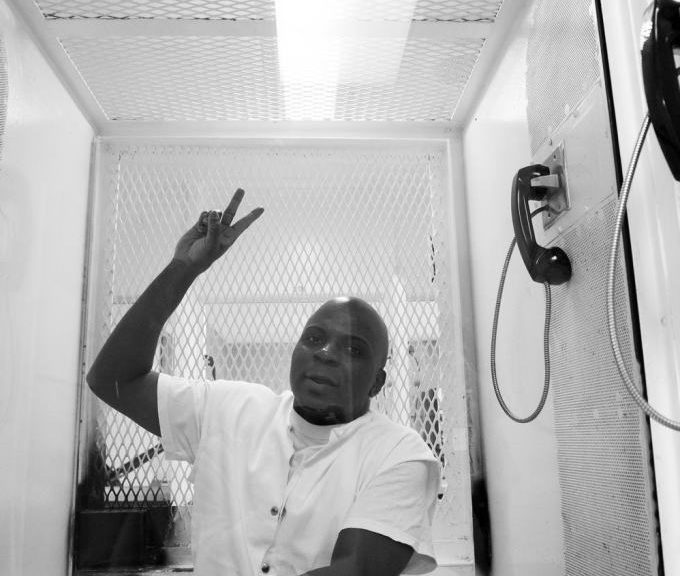
Chucky, you know I always have you back. Love you, Tina